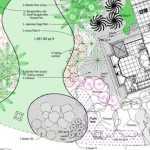By Cindy Hovis
Catalogs are crowding our mail boxes at this time of year, promising bright flowers, majestic trees, and the “perfect” plant that performs exactly as your location needs it to do. The best “how to” involving catalogs is truly a “how not to”–believing the claims of catalogs can foil the best gardeners. Please consult the web sites of the North Carolina Extension service, pick up materials from the local extension service, or call the master gardener phone line for help in selecting the plants that will grow well in our area. One of the best examples of this situation comes from one of my  experienced garden friends who spent five years attempting to grow grapes and suffered the loss of money, effort, and time. Let the buyer beware should be the maxim in purchasing plants from catalogs.
experienced garden friends who spent five years attempting to grow grapes and suffered the loss of money, effort, and time. Let the buyer beware should be the maxim in purchasing plants from catalogs.
This year has set records for old temperatures and snow in our area. This is a perfect time to do some armchair gardening by planning your early spring garden. Graphing paper is the good base to draw up your plans and using colored pencils can make your plans come to life. Choose the graphing paper with squares of ¼ inch representing one foot of garden space. Plan well ahead on paper since it is easier to move the plantings on paper than having to dig up erroneous plantings with a shovel. Plan where you intend to plant seeds sowed directly in the soil like carrots, garden peas, radishes, beets, and lettuce. Mid-March will come quickly enough and you’ll need to get these in the ground if there’s no snow. Broccoli, cabbage, and kale should be out early to mid-March also. Don’t forget the beloved root crops of onions planted by sets, and seed potatoes cut into pieces for sowing with 3 to 4 “eyes” per piece.
Roses require some early spring care also. Prune between Valentine’s day and the end of February. Look out for the dreaded 3D’s of rose canes–the dead, diseased, and damaged canes. Remove these with sharp pruners or lopers, making a 45-degree cut with the tools angled  to have the cut facing away from the center of the plant. Also, make sure the pruning is no more than one-third of the entire cane. Over-pruning will weaken the plant. Remove any canes that rub against each other–the weight of flowers and the wind will quickly cause damage. Bare root rose bushes can be planted as soon as they become available in the garden centers. I’ll explain more in the March column.
to have the cut facing away from the center of the plant. Also, make sure the pruning is no more than one-third of the entire cane. Over-pruning will weaken the plant. Remove any canes that rub against each other–the weight of flowers and the wind will quickly cause damage. Bare root rose bushes can be planted as soon as they become available in the garden centers. I’ll explain more in the March column.
I hope you begin to feel the “stirrings” of the exciting time of spring in our area. Remember to plan, plan, plan and then plant to ease the burden of replanting and to make the most of your garden space and your plantings.
If you have any gardening questions, call the North Carolina Cooperative Extension Services at 704-922-0301 to speak to a Master Gardener.
